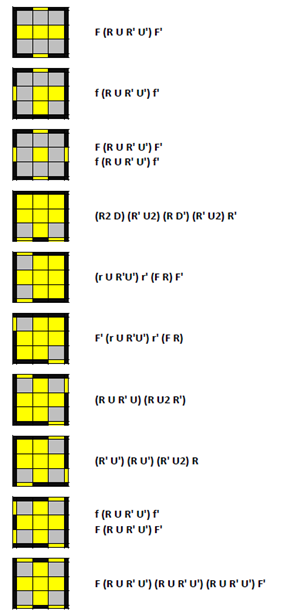
Mehta boasts a rotationless and high turns per second, TPS, solving style in exchange for learning a lot of algorithms. Solvers are advised to default to CDRLL path if there are not any good options.

There is a final Mehta option, Mehta-TDR, which involves solving the final DR block, and then solving the U layer with ZBLL, which consists of 843 algorithms, which may be unrealistic for a human to learn to is not considered in Mehta-OS, OS standing for Option Select, where the best "path" or final steps are chosen. Orient the U layer corners and insert DR edge

Orient and permute the U layer corners (COLL) Mehta-CDRLL (CxLL, Corners of Last Layer, with down-right edge, DR, unsolve) Mehta-APDR (Andreas' Permutation of DR block) One of five major paths can be used to solve the rest of the cube Mehta-6CP (6 Corner Pemutation) Insert the final E-slice edge and orient all edges at the same time. Unlike CFOP, the method also has a lower average move count in comparison, similar to the move count of Roux.įor "full Mehta", known as Mehta-OS, OS standing for Option Select, the solver must know enough of the algorithms from four different "paths" Pronunciation Steps Proposed by Yash Mehta in 2020, the Mehta method relies on high algorithm usage, similar to ZZ, which has the effect of high TPS.

What is it, and is it better than the big three methods, CFOP, Roux, and ZZ? Read more to find out. Been on the Reddit forums or speedcubing YouTube recently and seen mentions of a new method named the "Mehta" method.


 0 kommentar(er)
0 kommentar(er)
